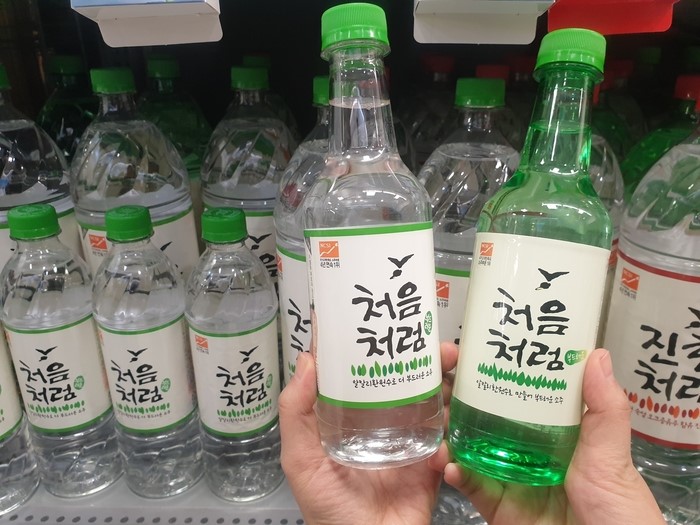On July 28, 2022, Coca-Cola announced that starting from August 1, Sprite, one of Coca-Cola’s biggest brands, is transitioning from its classic green bottle to clear plastic, in an effort to increase the material’s likelihood of being remade into new beverage bottles. 1
![]()
(Picture source from Wanwuzhi)
Although green PET is recyclable, clear bottles are more eco-friendly. Green PET material has limitations in recycling. For example, recycled green PET bottles are often converted into single-use items like clothing and carpeting and cannot be recycled into new PET bottles. Besides, green bottles need to be separated in the sorting process to avoid discoloring other recycled food-grade packaging materials, which requires more workload.
"Taking colors out of bottles improves the quality of the recycled material," said Julian Ochoa, CEO of R3CYCLE2, which is working with Coca-Cola to enable bottle-to-bottle recycling. "This transition will help increase the availability of food-grade rPET. When recycled, clear PET Sprite bottles can be remade into bottles, helping drive a circular economy for plastic.”
Along with the clear bottles, Sprite also introduced a new visual identity system featuring a revamped logo and packaging design to provide a consistent look and voice worldwide. Sprite's packaging graphics will retain the brand's recognizable green hue and include prominent "Recycle Me" messaging.
![]()
(Sprite new logo design, picture source from Wanwuzhi)
Coca-Cola plans to carry out clear bottles starting from the U.S. and Canada to over 70 countries. The Philippines is the first Asia Pacific market selling Sprite with clear bottles. Then Sprite in Thailand, Malaysia, South Korea, Fiji, and Hong Kong S.A.R., will follow on the heels to replace the green bottles with colorless ones.
Eco-friendly packaging is becoming a global hot trend. Aside from Sprite, more and more beverage brands are committing to bringing out greener products.
In China, Master Kong, a beverage giant, launched the first label-free PET bottle packaging, which applied to two signature products, lemon-flavored iced black tea and sugar-free iced black tea.3 The original colorful plastic labels are removed from the new packaging, and the flavors are distinguished only by the yellow and black bottle caps. The product name, production date, and other essential information are engraved on the bottle through laser printing technology. The label-free packaging not only reduces the plastic use on labels but also caters to China’s carbon neutrality policy4.

(Master Kong's label-free products, pictures source from Master Kong)
In South Korea, after the government banned the use of PVC packaging and colored plastic bottles at the end of 20195, barely can beverages with colored bottles be seen in Korean markets. LOTTE’s CHUM CHURUM Soju is the first batch to retire the colored bottle and adopt the colorless bottle.6 In addition to colorless bottles, beverages with easy-to-peel labels and label-free packages are also popular among Korean consumers.

(CHUM CHURUM Soju's colorless bottle product, picture source from kukinews)
ChemLinked Note
As more consumers are aware of the importance of environmental protection, sustainable packaging has become one of the critical purchasing factors. The Consumer Sustainability Survey found that 72% of consumers buy more environmentally-friendly products than five years ago.7
Apart from the above-mentioned "clear bottle", and "label-free products", enterprises can also adopt an eco-label on the packing, such as "Carbon neutral label”, “carbon trust”, etc., to differentiate themselves as an environmentally responsible brands.
Additionally, understanding the supervision in the target market is crucial to food packaging innovation. Most countries have restriction of certain materials and a management on waste via extended producer responsibility (EPR). Besides, the countries with the long-term development of sustainable packaging regulations, such as the US, France, etc., have established specific regulatory measures to support the changes in design, recycling capabilities, and recycled-content use. However, regulatory maturity and regulatory terminologies across countries are heterogeneous. Enterprises are suggested to refer to the local regulations to ensure compliance before innovative movement on food packaging and entrance of the target market.




 We provide full-scale global food market entry services (including product registration, ingredient review, regulatory consultation, customized training, market research, branding strategy). Please contact us to discuss how we can help you by
We provide full-scale global food market entry services (including product registration, ingredient review, regulatory consultation, customized training, market research, branding strategy). Please contact us to discuss how we can help you by 









